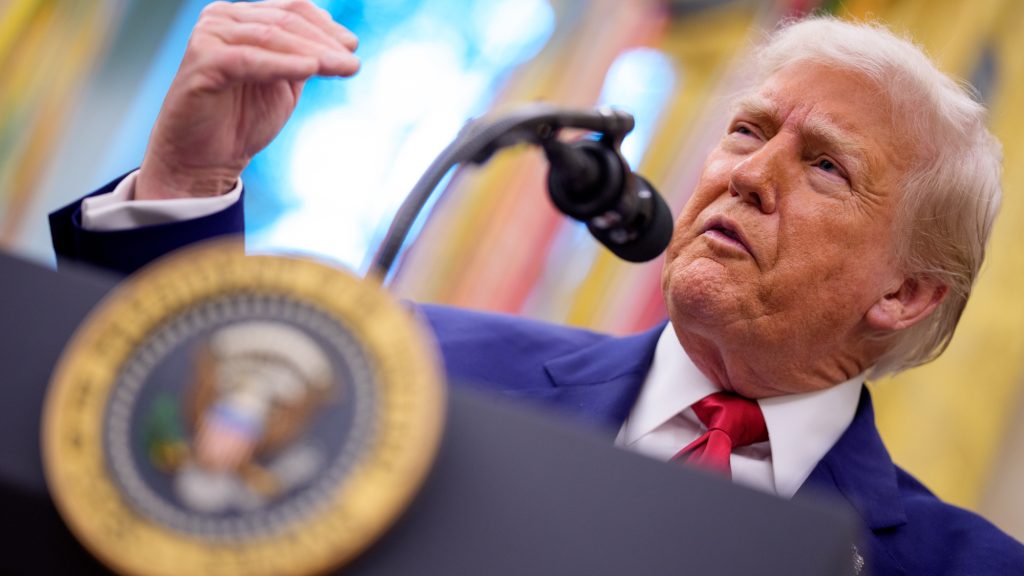In a significant move to enhance America’s position in artificial intelligence (AI), President Donald Trump has unveiled a comprehensive 20-page document titled “America’s AI Action Plan”. This strategic framework aims to ensure the United States remains at the forefront of AI technology globally. The plan outlines three primary policy goals: accelerating AI innovation by reducing bureaucratic hurdles, bolstering American AI infrastructure, and promoting the adoption of U.S. AI technologies among allied nations.
Accelerating AI Innovation
A central tenet of the AI Action Plan is the commitment to remove regulatory barriers that can stifle innovation. The White House’s approach includes soliciting feedback from industry stakeholders to identify and eliminate regulations that impede AI development and deployment. The Office of Management and Budget (OMB) has been tasked with reviewing and potentially repealing various regulatory measures that could hinder progress in the AI sector. This proactive stance is crucial, as the rapid evolution of technology often outpaces existing regulations, which can inadvertently slow down innovation.
The urgency for such measures is underscored by the increasing competition in the AI domain, particularly from countries like China. According to a report by the McKinsey Global Institute, AI adoption has surged across industries, with organizations significantly investing in AI capabilities. The need for the U.S. to streamline processes for AI research and application has never been more pressing.
Developing American AI Infrastructure
The second pillar of the plan is the enhancement of American AI infrastructure, which includes a focus on strengthening data centers, chip manufacturing, and energy resources. Given the growing energy demands of AI systems, this aspect is particularly critical. As highlighted by industry experts, including Elon Musk, the energy consumption of AI technologies is on the rise, with some companies even resorting to importing entire power plants to meet their needs. Musk’s recent endeavors to establish a power plant overseas for his supercompute cluster exemplify this issue, as reported by Tom’s Hardware.
To address these infrastructural challenges, the action plan emphasizes the need for investment in sustainable and scalable energy solutions, ensuring that AI development can proceed without jeopardizing environmental standards or straining national resources. The significance of this infrastructure cannot be understated, as it constitutes the backbone that will support burgeoning AI technologies across various sectors.
Exporting American AI Technology
President Trump’s action plan also focuses on the strategic exportation of American AI technology. By encouraging allies and partners to adopt U.S. AI solutions, the administration aims to create a dependency on American innovations, reinforcing the country’s leadership role in the global technology landscape. This approach aligns with statements from prominent industry leaders, including Nvidia CEO Jensen Huang, who has emphasized the importance of spreading U.S. AI technology to ensure it remains a standard in the global market.
However, this strategic push is complicated by the need for regulatory controls. The AI Action Plan includes proposals for expanding export controls, particularly concerning semiconductor manufacturing components. Such measures are essential for safeguarding U.S. technology while promoting its use internationally, creating a dual-edge strategy that balances innovation and national security.
Addressing Bias and Ideology in AI
One of the more controversial aspects of the AI Action Plan is the recommendation that the federal government engages only with AI systems that are deemed objective and free from ideological bias. This directive raises questions about what constitutes “bias” in AI and how it will be assessed. Critics argue that this could lead to legal challenges, significantly influencing the future landscape of AI development in the U.S. The reliance on subjective interpretations of bias might hinder diverse perspectives within the technology, posing challenges for developers seeking government contracts. Legal experts anticipate potential disputes over definitions and implementations of these guidelines.
Market Reaction and Future Implications
The release of America’s AI Action Plan has prompted a mixed response from the tech community and industry observers. On one hand, experts acknowledge the potential for accelerated growth in the AI sector as a result of reduced regulatory burdens and increased infrastructure investment. Conversely, concerns about ideological restrictions may stifle innovation and create divisions within the industry. A representative from the MIT Technology Review noted that while the intentions of the plan are well-founded, the implementation will be critical to its success, emphasizing the need for a nuanced approach to AI ethics and development.
Ultimately, while the AI Action Plan is not an executive order, it serves as a crucial roadmap that outlines the administration’s vision for the future of AI in America. By clarifying priorities and expectations for various governmental agencies, the document establishes a framework that could shape the U.S. AI landscape in the coming years. Stakeholders, from private companies to academic institutions, will need to navigate this new regulatory environment, balancing the opportunities for growth with the challenges posed by oversight and compliance.

